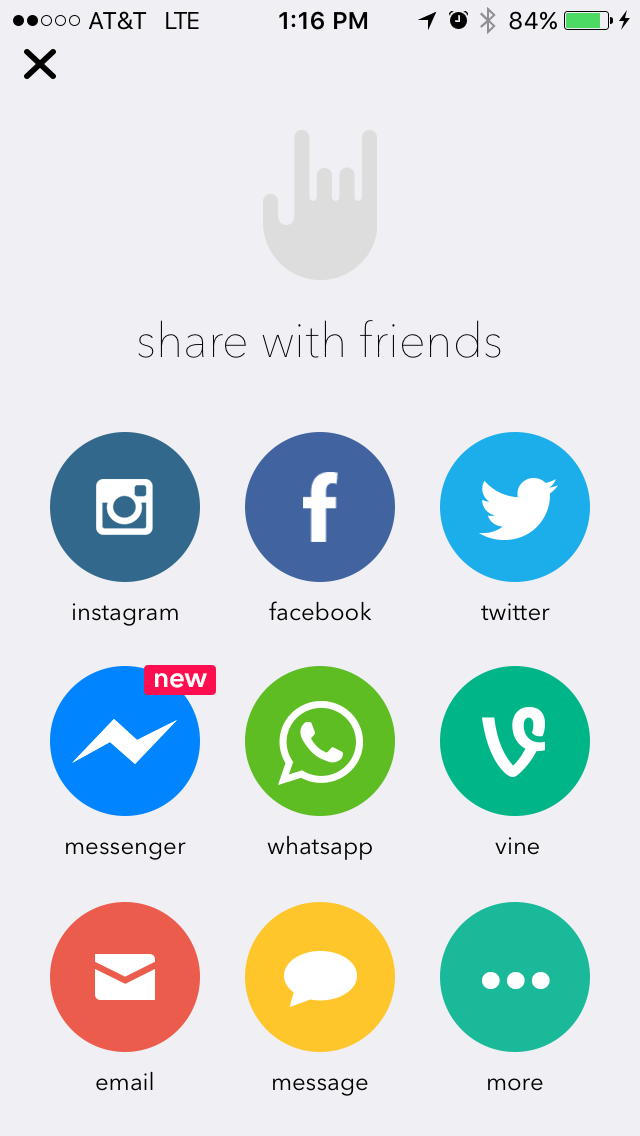 April 15, 2016
April 15, 2016
by Lynette Owens
In my travels over the last half year, I’ve had the fortune of spending a lot of time with hundreds of 4th-8th grade students across the country. I am typically invited to speak to these students by adults who are concerned about negative interpersonal dynamics playing out on social media (bullying, sexting, poor management of privacy, hacking, etc.) and who often apologetically admit to blaming their fear on their own ignorance of what kids are really doing online.
Such concerns are grounded in reality, however, as negative experiences sometimes happen online to and between kids. But more often than not, kids are doing far more innocuous activities like schoolwork, keeping in touch with friends, watching videos, and expressing creativity. One of the things I discovered last year was how many of them spoke up about music – discovering it, streaming it, and sharing it. Some of the favorite apps I hear about for music-listening are Spotify, Pandora, iHeart Radio, and YouTube. With the advent of these streaming services – both free and paid versions – and the ability to curate and share lists of their favorite music with anyone, these apps have become to this generation what making a mixed tape was to mine. According to eMarketer, teens spend an average of 4+ hours a day with music. That’s a lot of time doing something every day. Kids love it.
Beyond just listening, kids are now more deeply engaging with the music they love with apps like Musical.ly and Dubsmash. I have used them but also seen kids use them. They are pure joy and hilarity, demanding kids to be both creative and expressive, their own imaginations mixed with the original work of someone else’s, making and re-making their creations minutes at a time. These two apps are a bit different: Musical.ly is a social network, so you are connecting to others while creating and sharing with them within the app. Dubsmash is not. It’s just a tool to help you create a video/dub but you could share it on Instagram, Facebook, etc.
These apps allow you to create a video of yourself singing or speaking over a song or other audio clip (movie lines, etc.). For kids, it’s just a way to have fun with friends. For music artists like Rihanna, it’s a unique way to engage fans with their music. And like YouTube, it will probably be a force behind someone’s fame at some point.
If you’ve heard of these apps or your kids are asking to use them, here are 3 tips to help them use it safely and wisely:
- Think before you post.
As with anything you may post online, remember that once it is up it is hard to take back. Have fun with these apps, but assume that if you share them it will be public. Whatever you post will reflect on you. You may create something very funny, but if you’d rather keep it to yourself, then don’t share it. Just keep it on your phone and watch or share it from there.
- Protect your privacy.
You do have some control over who initially sees your post, but since these apps are designed differently, the way to manage some privacy within each is also different.
Musical.ly: Like other social networks, you can create a post, then share it with others that you connect with. You can also connect and follow others. To make sure you are only sharing with the people you want to:
- Go to the icon at bottom right to access your account -> click gear at upper right > choose Settings > Turn on Private account

- Once you create a video, you can:
- keep it private
- post it to the app (It will only be seen by those you are connected to in the app, or it will be public to anyone who uses the app if you didn’t set your account to private.) or
- post it to other social networks (see picture at right)
Dubsmash: This is not a social network so you don’t have followers or follow others within the app. Once you create your dub, you can:
- save it to your phone
- share it from the app via messaging apps like WhatsApp, Facebook Messenger, and iMessage, or
- share it on social media like Instagram, Snapchat or anywhere else. You just need to save your dub in your camera roll, then go to the social media app and upload the video there.
Maintaining privacy with Dubsmash is the same as maintaining privacy with your photos. First decide who you want to share with and how. Then make sure you set up your privacy settings on those social networks before you upload a dub to it.
- Use your time well.
I have heard parents complain about how much time their kids are spending (or in their words, wasting) on these apps. It may be up there with searching for funny cat videos. I think it is like any other form of entertainment online, like video games and watching movies. Set expectations with your kids about time online. Don’t take away the opportunity for them to have fun and be creative, but make sure it doesn’t take away from other things like homework, outside time, or being with friends and family.
Like everything else, one of the best things you can do is to try out these apps so you can really understand them rather than fear them, and put yourself in a great position to help your kids. Who knows? You may just have fun doing it.
Lynette Owens is the Founder and Global Director of Trend Micro’s Internet Safety for Kids and Families program. With 20+ years in the tech industry, Lynette speaks and blogs regularly on how to help kids become great digital citizens. She works with communities and 1:1 school districts across the U.S. and around the world to support digital literacy and citizenship education. She is a board member of the National Association of Media Literacy Education and SPARK Kindness, and serves on the advisory boards of INHOPE and U.S. Safer Internet Day.
Follow her on Twitter @lynettetowens
Lynette Owens is Vice President of Consumer Education & Marketing at Trend Micro and Founder of the company's signature Internet Safety for Kids and Families program. With 30+ years in the tech industry, Lynette oversees global initiatives to help deliver the technology tools and education that people of all ages need to keep themselves and their families safe online. She serves on the advisory boards of the Identity Theft Resource Center's Alliance for Identity Resilience, the Global Anti-Scam Alliance, and INHOPE.